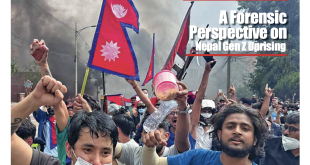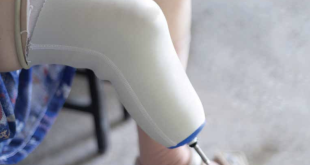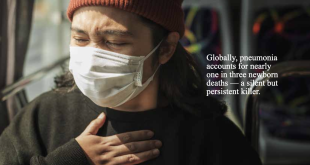A few moments of mindful eating can save you from a life-threatening emergency.

Dr. Sriti Manandhar
Associate Professor, ENT and Head & Neck Surgery
Senior Consultant Rhinologist
Dr. Sriti Manandhar is an Associate Professor of ENT and Head & Neck Surgery and a Senior Consultant Rhinologist, renowned for her expertise in endoscopic sinus and anterior skull base surgery. With over twelve years of dedicated clinical experience, she has made significant contributions to advancing ENT care in Nepal.
Dr. Manandhar earned her M.S. in ENT from B.P. Koirala Institute of Health Sciences and completed a two-year clinical fellowship in Rhinology and Anterior Skull Base Surgery at MAA ENT Hospital, Hyderabad, India. She further refined her skills in Rhinoplasty at the Asan Medical Center, Ulsan University, Seoul, South Korea.
Currently, Dr. Manandhar provides expert ENT and Head & Neck surgical services, with a particular focus on rhinology and endoscopic procedures, at Blue Cross Hospital, Kathmandu.
Festival Feasts, Emergency Rooms
Every year during Dashain, hospitals across Nepal brace for an unusual yet predictable emergency — meat and bones stuck in the food pipe. What should be a time of family joy and feasting often ends in midnight trips to the emergency room, urgent endoscopic procedures, and worried relatives outside ENT wards.
“We see a surge of meat and bone foreign body cases every Dashain. Patients rush in with severe throat or chest pain, unable to swallow even their own saliva,”
says Dr. Sriti Manandhar, ENT surgeon, Kathmandu.
Why Dashain Brings In More Cases
Dashain is synonymous with meat feasts — especially goat, chicken, buffalo, and fish. In the rush of eating, often accompanied by laughter, conversation, and alcohol, small bones slip unnoticed into the esophagus.
- Children are vulnerable because they don’t chew properly.
- Elderly with dentures or swallowing difficulties face higher risks.
- Adults, in a festive mood, often eat hurriedly or distractedly.
The upper esophageal sphincter is the most common site of lodgment, followed by the mid-esophagus and the gastroesophageal junction.
Symptoms You Shouldn’t Ignore
Warning Signs
A lodged bone or piece of meat usually presents with:
- Sudden throat or chest pain
- Difficulty swallowing (dysphagia)
- Painful swallowing (odynophagia)
- Excessive salivation or drooling
- Foreign body sensation in the throat
- Persistent feeling of something stuck
- In severe cases: choking, stridor, or breathing difficulty
Dangerous Complications
A swallowed bone may seem trivial, but if ignored or mishandled, it can turn fatal.
- Esophageal perforation leading to mediastinitis (life-threatening infection)
- Abscess formation in the neck or chest
- Tracheoesophageal fistula
- Massive bleeding if a vessel is eroded
- Airway compromise due to swelling
Don’t Do This
“The biggest danger is delay. Many patients try swallowing rice balls, bananas, or water to ‘push it down’. This usually worsens the impaction,”
warns Dr. Sriti Manandhar, Senior ENT Consultant.
How Doctors Manage It
Step 1: Stabilize the airway.
If the patient is struggling to breathe, emergency interventions like tracheostomy may be required.
Step 2: Endoscopic removal.
- Rigid esophagoscopy under general anesthesia is the gold standard, especially for children.
- Flexible esophagoscopy is useful in cooperative adults and elderly patients.
Step 3: Post-removal care.
The esophageal lining is carefully Examined for Injury. Antibiotics, pain relief medicines, and observation follow. Surgery is reserved for complicated cases with perforation or abscess.
A Seasonal Burden on Hospitals
During Dashain, ENT surgeons and anesthetists remain on high alert. Emergency endoscopies spike—sometimes several cases in one night. The burden is heavier in rural areas, where expertise and equipment are limited, and patients often travel long distances for treatment.
How to Prevent It
- Chew meat slowly and thoroughly – don’t gulp large chunks.
- Avoid talking or laughing while eating.
- Supervise children when they eat meat and fish.
- Elderly with dentures should take extra care, avoiding small sharp bones.
- Don’t try home remedies like swallowing rice balls or bananas.
- Seek ENT help immediately if pain or discomfort persists.
“A few moments of mindful eating can save you from a life-threatening emergency,” doctors emphasize.
The Socio-Cultural Context
Eating meat is not only nutritional but also a tradition during Dashain. Families gather, prepare large quantities—often hurriedly cooked and consumed in large groups—and celebrate abundance. Alcohol intake further impairs alertness while eating. Yet this very abundance, coupled with haste and distraction, leads to preventable medical emergencies. Thus, while foreign body ingestion is a global phenomenon, its seasonal clustering during Dashain makes it a unique cultural health challenge in Nepal. Raising awareness is key. Simple health messages through radio, TV, and social media before and during Dashain could significantly reduce hospital admissions.
Conclusion
Foreign body impaction of meat and bone in the food pipe is a serious seasonal emergency in Nepal. While endoscopic removal is safe and effective, prevention remains the best cure. This Dashain, as families across the country gather around plates of goat curry and chicken fry, a little extra caution could keep the joy in the festival—and the bones and meat bolus out of the food pipe.
 Medicosnext
Medicosnext




